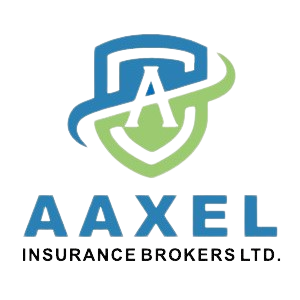If you’ve ever taken a closer look at your Ontario G driver’s license, you might have noticed four small dots on the front. While they may seem insignificant, these 4 dots on G License Ontario: What They Really Mean can actually provide important information about the status of your license.
Understanding these dots is crucial for drivers, as they can indicate specific restrictions, endorsements, or unique characteristics of your driving record. Whether you’re a new driver, an experienced motorist, or someone applying for auto insurance, recognizing these details can help you avoid potential issues on the road. Don’t let those 4 dots on your G license catch you off guard—stay informed and protected with Aaxel Insurance! Get the right coverage and expert advice to keep your driving record and wallet safe. Get a free quote today!
This article will uncover the meaning of these dots, their impact on your driving privileges, and why they matter in different situations. Buckle up, because we’re about to explore everything you need to know about the 4 dots on your Ontario G license.
What Are the 4 Dots on G License Ontario: What They Really Mean?
The four dots on an Ontario G license are often overlooked, but they serve a specific purpose. They are not merely a design feature—they provide essential details about the license holder.
These dots typically indicate:
- Driver’s restrictions (if applicable)
- Special endorsements (such as for commercial vehicles)
- License verification and scanning
- Insurance-related factors
While the Ontario Ministry of Transportation (MTO) does not publicly disclose all details regarding these dots, they are commonly linked to internal systems used by law enforcement, insurance companies, and government authorities.
The dots help officials quickly verify the authenticity of a driver’s license and check for any special conditions or restrictions. If you have ever wondered why these dots exist, it’s because they play an important role in ensuring road safety and record-keeping.
How the 4 Dots Affect Your Driving Status
Your driving status can be impacted by these 4 dots on G License Ontario, depending on the information embedded in them.
Here’s what they could mean for you:
- Driver Restrictions – If you have certain medical conditions, vision impairments, or other restrictions, these may be coded into the dots for law enforcement to recognize.
- Endorsements – Some drivers hold special endorsements allowing them to operate specific types of vehicles, and these endorsements may be signified by the dots.
- Insurance Eligibility – Auto insurance companies may reference these dots when assessing a driver’s risk level. If your dots indicate certain restrictions, it could impact your insurance rates.
- License Authenticity – The Ministry of Transportation Ontario (MTO) uses these dots to prevent fraud, making it easier to identify counterfeit or tampered licenses.
Essentially, these 4 dots serve as a digital footprint, allowing authorities and insurance providers to instantly access important driver information.
Why Insurance Companies Care About These 4 Dots
If you’re shopping for auto insurance in Ontario, you might be wondering how the four dots on your G license affect your premiums. Insurance providers use these dots to:
- Verify your license status and confirm its authenticity
- Check for restrictions that may affect your ability to drive safely
- Assess risk factors that could impact your insurance policy
- Determine eligibility for discounts or special coverage options
How These Dots Can Affect Your Insurance Premiums
| License Status | Possible Impact on Insurance |
| No Restrictions | Lower risk, potential discounts |
| Vision Restrictions | May lead to higher premiums |
| Endorsements for Special Vehicles | Could require additional coverage |
| Medical Restrictions | Might limit coverage options |
Insurance companies want to ensure they are insuring safe, responsible drivers. If your license has specific restrictions or endorsements, it could affect your policy. Some providers may even decline coverage if they see certain conditions marked within the dots.
This is why understanding the meaning behind these dots can help you avoid unexpected surprises when applying for car insurance.
The Link Between 4 Dots on G License Ontario and Road Safety
The 4 dots on G License Ontario: What They Really Mean are not just there for insurance or administrative purposes—they also play a significant role in road safety.
The Ontario government has strict measures in place to ensure that only qualified and capable drivers are on the road. These dots help authorities quickly determine if a driver has any restrictions or special conditions that could affect their ability to drive safely.
For example:
- A driver with a vision impairment may be required to wear corrective lenses, and this restriction may be coded into the dots.
- Someone with a medical condition that could impact their ability to drive may have additional restrictions noted.
- A driver who has completed a defensive driving course may have an endorsement that reflects their specialized training.
By encoding this information within the license, law enforcement can instantly access important details about a driver, allowing them to make quick and informed decisions during traffic stops or accidents.
Can the 4 Dots on a G License Be Removed?
Many drivers wonder whether these four dots can be removed or altered. The simple answer is no—they are an official part of the Ontario driver’s license and cannot be tampered with.
However, if you have a restriction or endorsement coded into the dots and you believe it is no longer necessary (for example, if your vision has improved and you no longer need glasses), you may be able to update your license.
To do this, you would need to:
- Visit a ServiceOntario center.
- Provide medical documentation or test results proving that the restriction is no longer necessary.
- Pay any applicable fees for updating your license.
The Ontario Ministry of Transportation (MTO) will review your request and, if approved, update your driver’s record. While the dots themselves won’t disappear, the information they contain may be modified or updated.
What Happens If Your License Has 4 Dots and You Get Pulled Over?
If you get pulled over by the police, the 4 dots on your G license may be scanned or checked by the officer.
Here’s what could happen:
- If the dots indicate no restrictions, your license will be considered valid, and you can proceed as normal.
- If the dots show a restriction, the officer may ask additional questions or request proof that you are complying with the restriction (e.g., wearing glasses if required).
- If the dots flag an issue, such as an expired medical clearance, you could face a fine or license suspension until the matter is resolved.
The key takeaway is that these dots are an integral part of your driving record, and they help law enforcement quickly verify your status.
Final Thoughts: Why the 4 Dots on G License Ontario Matter
The 4 dots on G License Ontario: What They Really Mean go beyond just being a minor design element on your card. They provide crucial information about your driving status, restrictions, and endorsements.
Whether you are applying for insurance, getting pulled over, or renewing your license, these dots can impact your driving privileges in several ways.
Key Takeaways:
These dots indicate license restrictions, endorsements, and authenticity.
Insurance companies use them to assess risk and set premiums.
Law enforcement can scan them to quickly verify driver details.
They play a role in road safety and fraud prevention.
You cannot remove them, but you may be able to update their information if your circumstances change.
If you want to ensure that your Ontario G license remains valid and that you are getting the best insurance rates possible, understanding these dots is essential.
Make sure to stay informed, check your license details regularly, and work with trusted insurance providers to get the best coverage for your needs.
By knowing the true meaning behind these four dots, you can avoid potential complications and enjoy a smooth, hassle-free driving experience in Ontario!





